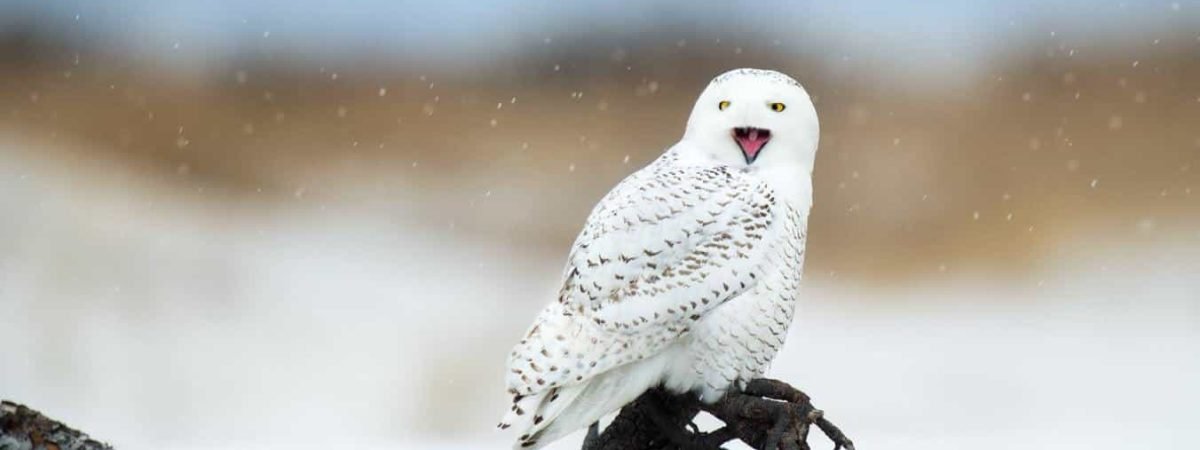
Want to learn more? This National Geographic Book on Owls is a great read!
The most common of these species in the state is the Great Horned Owl which is not surprising as it is one of the most common owls across the United States.
Washington is a state with a split climate, the western half of the state has a Mediterranean climate and there are mild summers and only cool winters.
There are over 156 state parks and a further 3 national parks in Washington. Now that we’ve had a look at the state of Washington and listed what owls reside there, lets have a look at the individual species in more detail.
Want to attract Owls to your yard? Take a look at our article!
What Owls can be seen in Washington?
Table of Contents
1. Barn Owl
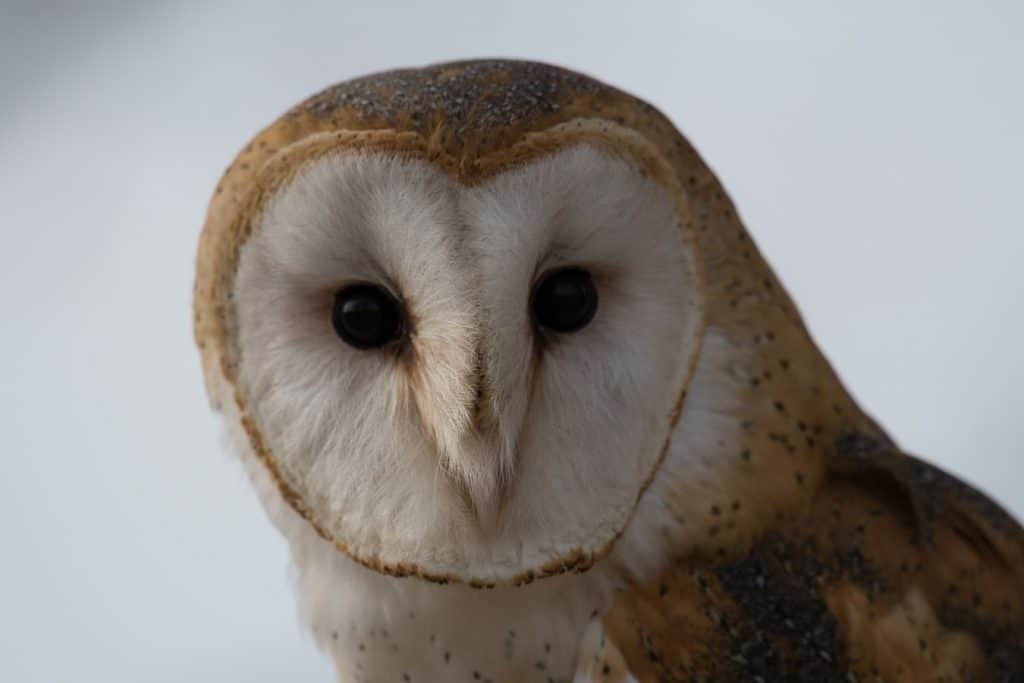
Wingspan
107 to 110 cm
Weight
430 – 620 g
Life Expectancy
Up to 4 years
Diet
Voles, Shrews & Mice
Barn Owls are covered with pale feathers that are a mix of buff and grey on both the head and their wings.
There are medium in size. During the daytime these colours are more noticeable whilst at night they can appear completely white.
These birds can be found across 48 states in America and will occasionally stray into southern Canada. You are most likely to see these birds in open grasslands.
These birds are monogamous, and many barn owls appear to mate for life, although there have been some conflicting reports that say males will mate with multiple females.
Males will bring food to the females as she gets the nest ready for incubation.
These birds are protective of their nests, but they happily share hunting grounds with others of their species.
These owls have a large range and they can be seen in the state of Washington throughout the whole year. They can also be seen in all regions of the sate and they are most active during their breeding seasons.
The highest number of sightings of this owl have been to the north west of the state.
2. Flammulated Owl
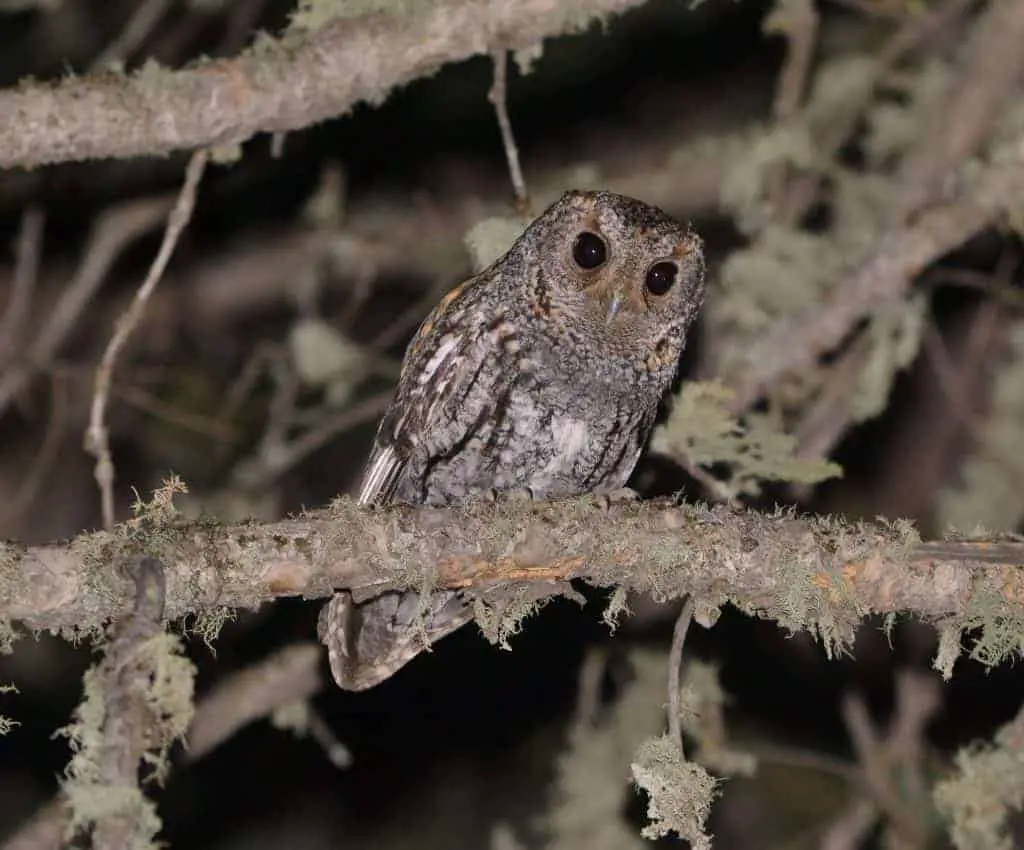
Wingspan
14inches
Weight
60g
Life Expectancy
8 years
Diet
Mostly insects
This is one of the smaller owl species and they have grey, brown and rusty coloured feathers covering their bodies.
These feathers work extremely well at camouflaging this bird against its common background of bark trees.
These owls will form long term pairing bonds, and those that don’t are still monogamous during the breeding seasons however around ¼ will not mate monogamously.
These owls are quite defensive of their territories and will chase others off and their territories can be up to 5 or 6 acres. That being said, it is rare for a full fight to occur between two individuals.
You are most likely to see these birds in areas of forests, such as coniferous forests, and whilst their wintering behavior is not well studied it is believed that they primarily stay in Mexican forests for these cold months.
These owls only have a limited range and can only be seen in Washington state during their breeding seasons.
They are only seen in the southern regions of the state with the most recorded sightings being to the south east of the state.
3. Great Horned Owl

Wingspan
~140cm
Weight
1.4 kg
Life Expectancy
28 years old
Diet
Squirrels, Rabbits & Skunks
These large owls get their names from their long, pointed ear that look like horns on top of their heads.
These owls have a stocky body and thick feathers that are greyish brown shades.
These birds form long term breeding pairs, the breeding pairs have been known to stay with each other outside of the breeding season.
They remain monogamous to their partner. They are territorial birds and have a series of hoots that they will use to defend their territory, both members of the breeding pair will help defend their nests.
In fact, these birds are so territorial that they have at times been known to kill other individuals of their own species that do not back off after aggressive displays.
They are often harassed by other species of birds such as crows which will call and peck at them to try and get them to abandon the area and their eggs.
These owls have the widest range of all the listed ones and can be seen throughout the year in Washington.
They have been seen across all regions of the state and are most active during their breeding seasons.
The highest number of recorded sightings have been in the south east of the state.
4. Short-Eared Owl
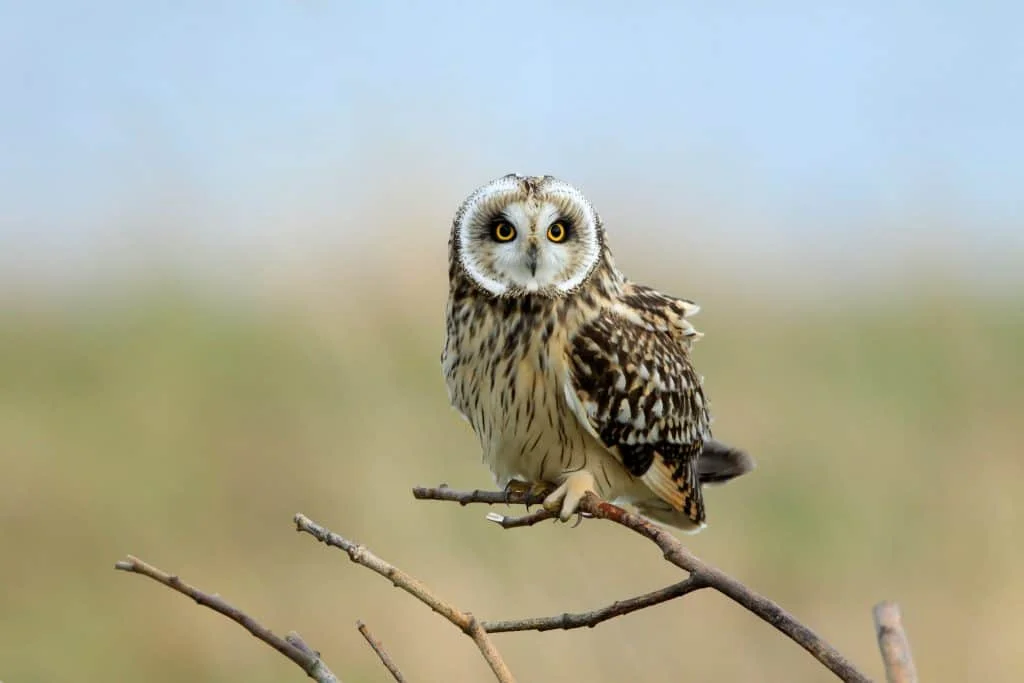
Wingspan
85 to 110 cm
Weight
206–475 g
Life Expectancy
4-12 years
Diet
Voles, Mice, Squirrels
Short-eared owls are a medium sized species of owl that are covered in brown and white spotted feathers, they get their name from their barely visible ear tufts that are present on the side of their heads.
These owls prefer to stay in areas of open country and low vegetation and will hunt during both the day and the night.
Short-eared owls form loose colonies and are monogamous maters during the breeding season, however it is not confirmed as to whether these birds mate for life.
Breeding pairs will make their roosts on the ground in areas of tall grass, they only tend to roost in trees during the winter months especially when it is snowy.
Whilst females spend their time incubating the eggs the males will also help defend their territory with a series of harsh calls.
These owls have a very wide range and can be seen in Washington throughout the whole of the year and their range spans across the whole state.
The highest number of sightings of this owl have been in the south east of the state.
5. Snowy Owl
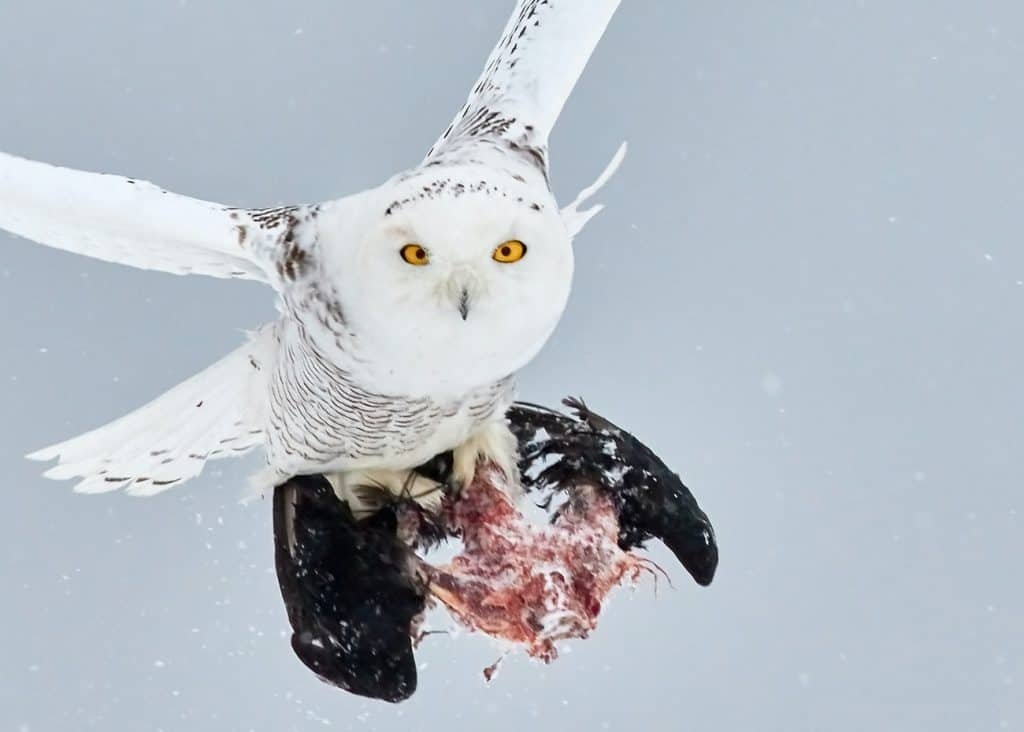
Wingspan
150 cm
Weight
2 kg
Life Expectancy
10 years
Diet
Birds, Rabbits, Fish & Rodents
The Snowy Owl is a species of owl that is covered in thick white feathers and they are medium in size.
Brown and black markings are sometimes visible on these feathers and vary in distribution from one individual to another.
It is not confirmed whether these birds are monogamous, but it is known that males exhibit a unique flight display when courting a female.
They will grasp some prey in their talons before performing a very large dive with their wings in a v shape. These birds are incredibly defensive of their territories and are not afraid to attack their own species and others if necessary.
There has even been a reported incident of a snowy owl attacking a pair of arctic wolves. Snowy Owls like wide open spaces with a minimal number of trees, they are most commonly found in tundra habitats and across plains.
They will also perch of high man-made items such as telephone poles during the winter months. This is so that they can observe prey more clearly.
These birds can only be seen in Washington during the winter seasons. They only have a range that encompasses the northern half of the state and most of the sightings are in the north west of the state.
6. Long Eared Owl
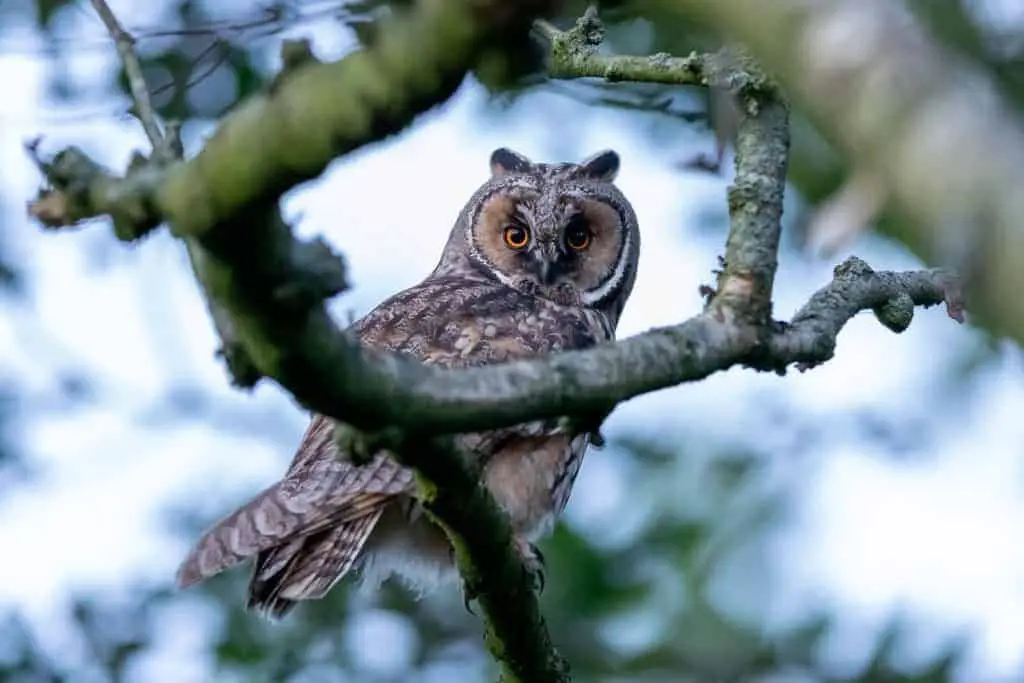
Wingspan
90 to 100cm
Weight
250 g
Life Expectancy
4 years
Diet
Small mammals, mice, rats & rabbits
The Long-Eared Owl, as the name suggests, is known for its long and prominent feathered ears.
They have orange faces and their bodies are covered with black and brown feathers.
These owls like to roost in dense woodlands and outside of the breeding season will roost in loose colonies of up to 100 individuals.
During the breeding season these colonies will nest near each other, but they will not roost together.
These birds only mate with one individual during the breeding season, although it is not known as to whether they form long term breeding pairs.
Males will perform a series of complex, zigzag flights whilst producing a mating call in an attempt to court a female.
In Washington, these birds can be seen throughout the year in the eastern regions of the state but to the west they can only be seen during the winter months.
The highest number of recorded sightings have been in the north west of the state.
7. Burrowing Owl
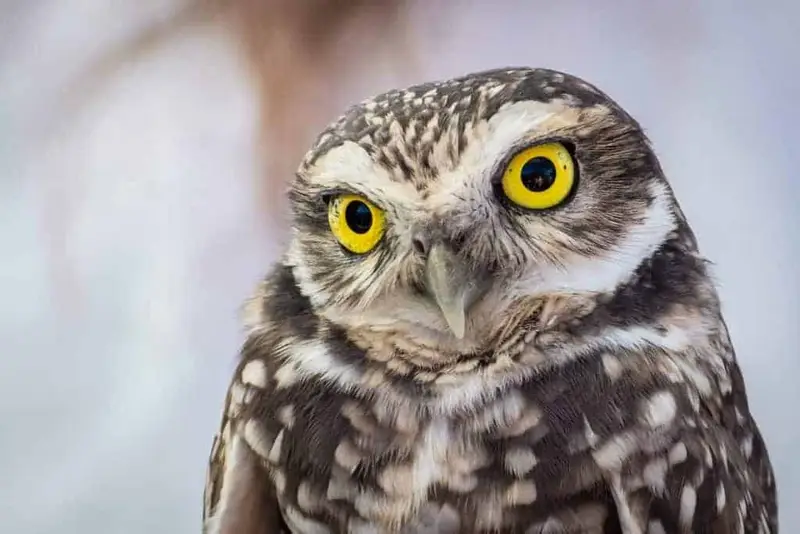
Wingspan
51-61 cm
Weight
140-240 g
Life Expectancy
10 years
Diet
Large Insects and Small Rodents
The Burrowing Owl is a small species of owl covered in brown feathers and speckled with large amounts of white.
You are most likely to see one of these owls in open, treeless areas of grasslands. They are known to hunt throughout both the day and the night which is not common for many owls.
Burrowing Owls stay together in loose colonies and are monogamous during the breeding season, although it is unknown as to whether they form long lasting breeding pairs.
Females will stay in the burrow to incubate the eggs. The males will spend their time defending their territory with a series of calls and wing displays.
These birds only have a small range and can only be seen in the state of Washington during their breeding seasons.
Their range is to the western half of the state and they have most commonly be seen in the south eastern borders of the state.
8. Barred Owl
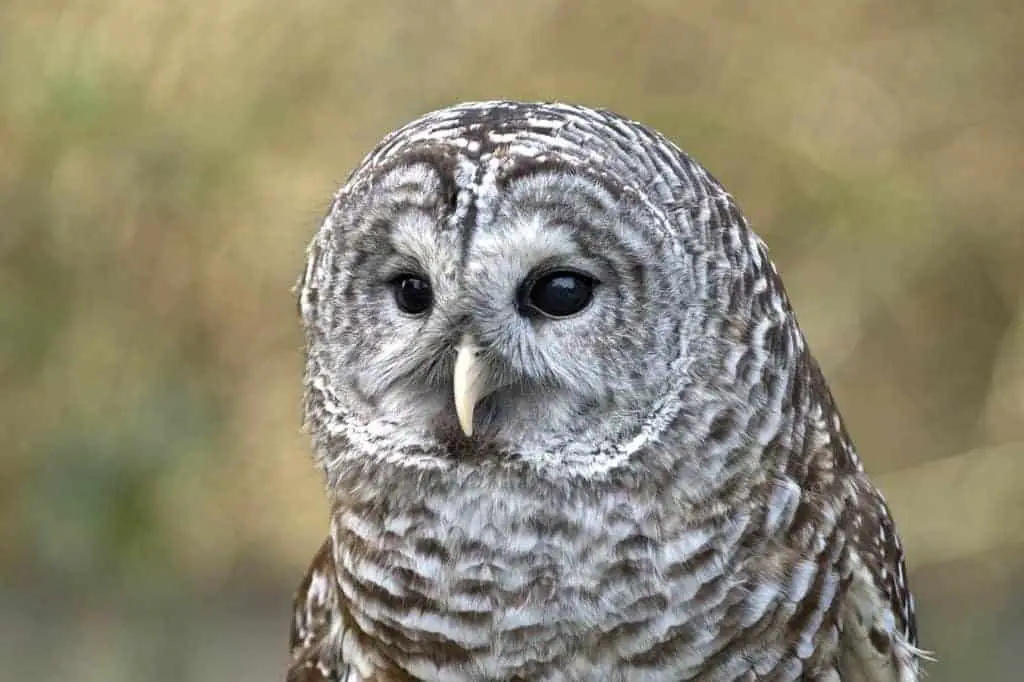
Wingspan
96-125 cm
Weight
468-1,150 g
Life Expectancy
10-23 years
Diet
Small mammals
Barred Owls are a large and stocky species of owl and they are covered with brown and white barred feathers.
These owls stay ones close to bodies of water and will nest in a variety of woodlands, where they are able.
Barred Owls are very territorial and remain so throughout the year, females tend to be the more aggressive ones during the breeding season.
They have been observed using a kind of flight attack with their talons where they will collide with other birds.
These birds are monogamous and are believed to mate for life. They will raise a single brood of eggs together and if there is a predator, one parent will leave the nest to cause a noisy distraction and prevent the young from being attacked.
These owls can be seen year-round in the state although their range does not encompass all of the regions of the state.
They are only seen in the northern regions of the state and most of the sightings have been to the north east of the state.

More Articles.
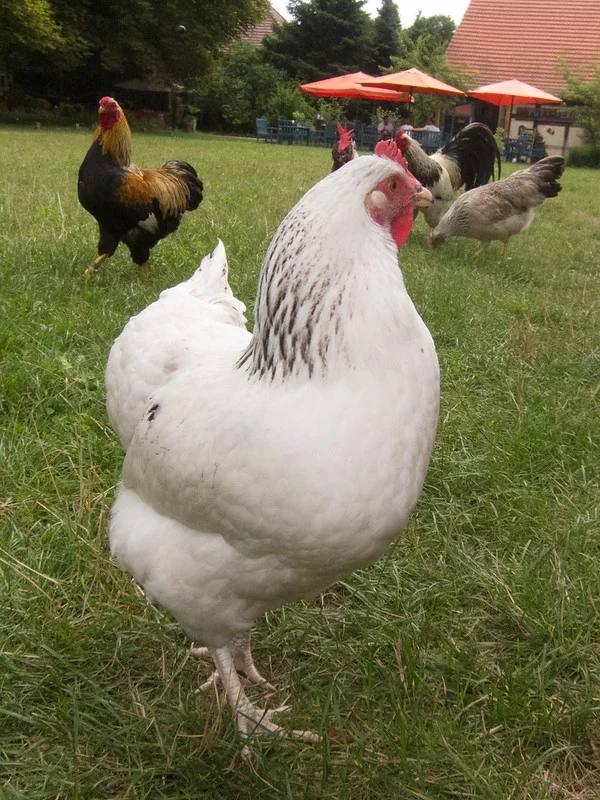
What does it mean to see a White Hen in your dream? (Symbolism & Meaning)
Seeing a Phenoix in your dream can symbolize a fresh start, a new beginning, or
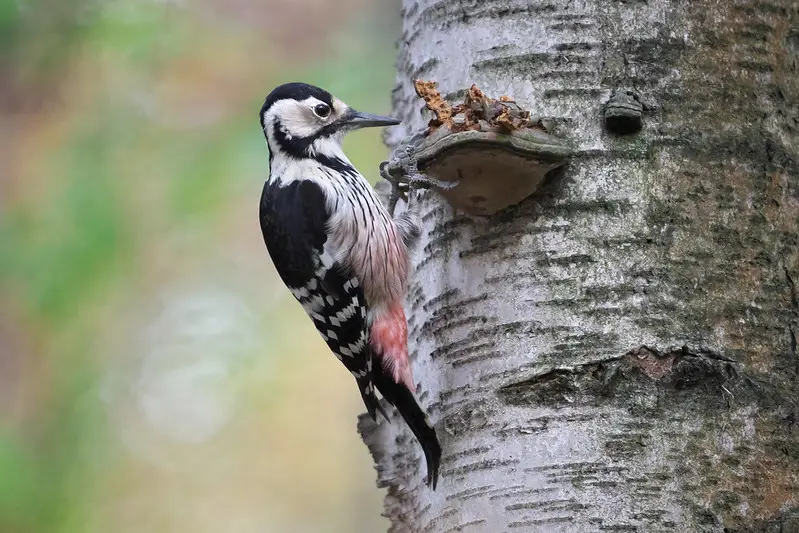
What Woodpeckers can you see in Germany? (8 Species with Pictures & Sounds)
What woodpeckers can you see in Germany? There are 8 different species of woodpecker that
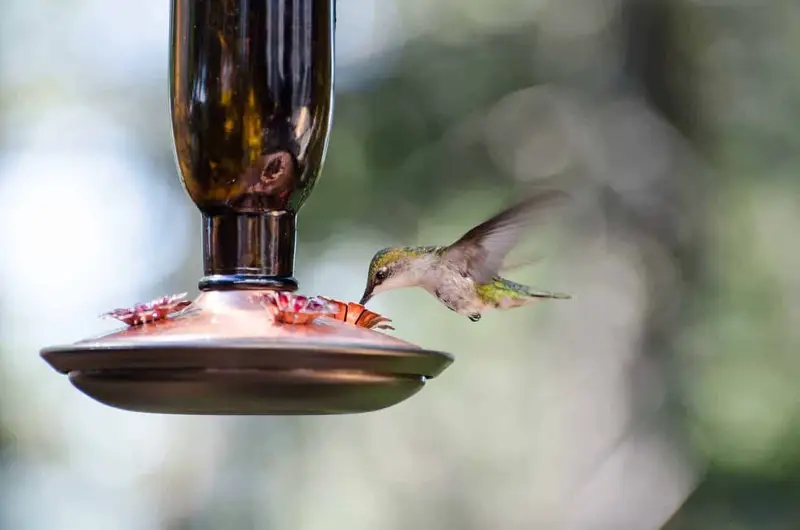
Best Hummingbird Feeders for 2020
Nectar bird feeders are well-known for attracting a variety of adorable birds and for saving

About Us
We are avid bird-watchers who recently retired, allowing us more time to travel the world. Fortunately, we have managed to visit numerous countries around Europe, Asia, and America. Watching and photographing birds has been a passion for many years and we are making the most of the extra time on our hands!
